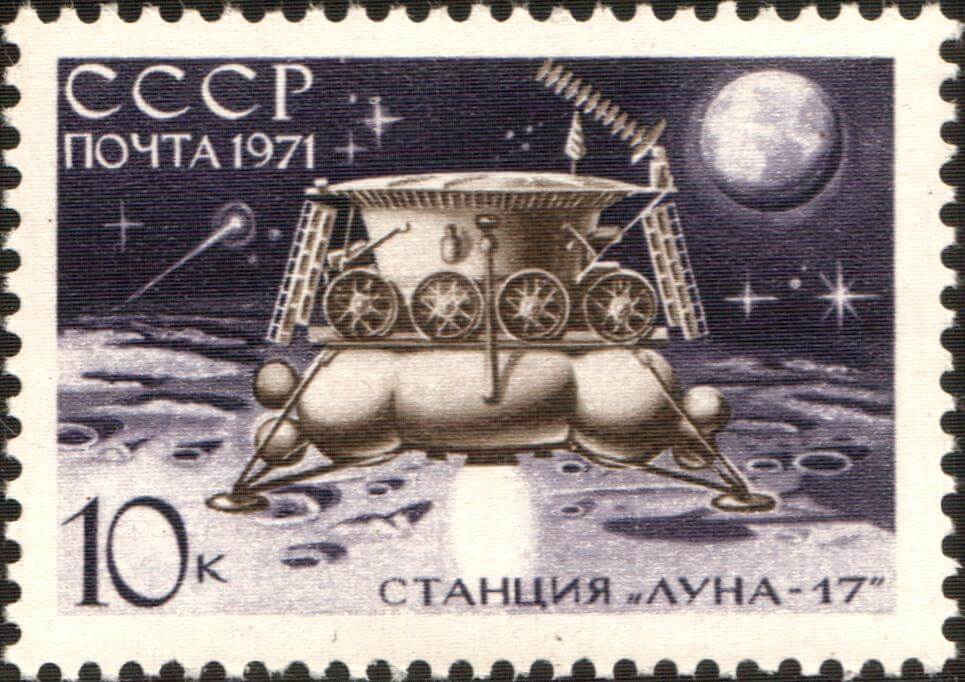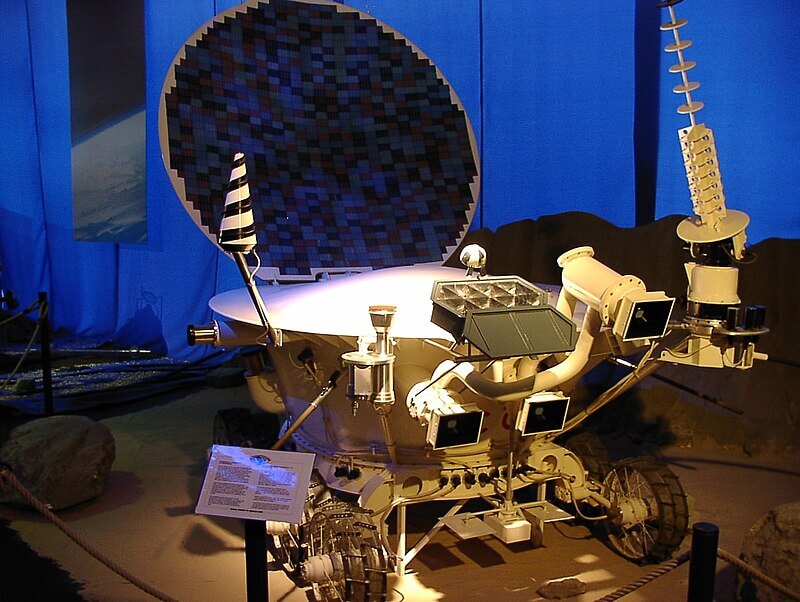
People in general remember the achievers, who accomplish something first. Neil Armstrong was the first human to walk on the Moon’s surface during Apollo 11’s historic Moon landing in 1969. But very few know the other eleven who have walked on the lunar surface. The last three Apollo missions (15, 16, and 17), which happened in 1971 and 1972 were very important from the scientific point of view. These missions gave humans better exposure to what this natural satellite to the earth is made of.
Apollo 11 was all about geopolitics. However, subsequent human missions to the Moon did undertake some experiments. During these three missions, the US astronauts travelled on the Moon’s surface by sitting in a Moon buggy (dune buggy). This buggy is nothing but a rover. Today, when chandrayaan-3 is approaching the Moon and its rover module is expected to travel the Moon’s surface for 14 days, it would be of interest to know about the other rovers, which have operated on the Moon’s surface so far.

To date, only three countries namely; the US, Russia (former Soviet Union) and China have been successful in operating the rovers on the Moon’s surface. For the US, their astronauts have driven the rovers on the Moon’s surface, while in the case of the Soviets and China, the rovers functioned as robotic equipment. Amongst the three, it was the Soviets who became the first state in making the rovers travel on the Moon’s surface. They undertook two rover missions during the 1970s.
Also Read: Was the 1969 moon landing a fake?

For the Soviets, their Luna 17 spacecraft (1970) carried the Lunokhod 1 rover to the Moon. This was the first wheeled craft ever operated on another celestial body. The earlier 1969 attempt (Lunokhod 0) was a failure. One lunar day is 14 Earth days. Chandrayaan-3 is expected to operate for one lunar day. Lunokhod 1 operated on the lunar surface for 11 lunar days. This mission was designed to last for around 90 Earth days, but the rover remained operational for 321 Earth days. During this stay, it travelled a total distance of 10.54 km. Apart from antennas and batteries, Lunokhod 1 was equipped with four television cameras, devices to test the lunar soil, an X-ray spectrometer, an X-ray telescope, cosmic ray detectors, and a laser retro-reflector (supplied by France). In Apr 2010, the present location of Lunokhod 1 was found by scientists from the US by using laser ranging techniques. In 2010 US scientists and 2013 French scientists are known to have used Lunokhod 1’s reflector for some experiments indicating that after the silence for more than four decades, this rover still had a lot to offer.

Lunokhod 2 was the second Soviet robotic lunar rover, which was flown by the Luna 21 spacecraft in 1973. This 1814 kg rover, is known to have survived for about four months and had travelled a distance between 37 to 42 km on the lunar surface. Thousands of TV pictures were received during this mission. Some experiments to understand the local magnetic fields and soil mechanics of the lunar surface material were carried out. There is an interesting story about this mission. During December 1993 at a Sotheby’s auction, Lunokhod 2 and the Luna 21 lander were sold for US$68,500. The buyer Richard Garriott was a computer game magnate. He is America’s first second-generation astronaut. His father was a NASA astronaut, and he paid money to stay at ISS for two weeks in 2008. He considers himself the only private owner of an object on a planet!

For all these years, the US space agency NASA has successfully undertaken some amazing missions. Today, NASA has an operational helicopter flying on Mars. Ingenuity (or Ginny), on April 19, 2021, successfully undertook the first powered controlled extraterrestrial flight by an aircraft. The copter is operational for more than 825 days and has undertaken 54 flights till early August 2023. Another amazing mission by NASA involves the Lunar Roving Vehicle (LRV) moving on the Moon’s surface.
Also Read:
Will Russian Luna 25 beat Chandrayaan-3 to land first on the South Pole of the Moon?
Man gifts land on Moon to his wife on her birthday
References to the lunar rover would be found in scientific fiction published during the 1950s. NASA is known to have been working since the 1960s on this idea. Before the launch of Apollo 11, the private aerospace company Boeing started conceptualising the idea of the Lunar Roving Vehicle (LRV). Subsequently, NASA successfully operated a battery-powered four-wheeled rover (developed by Boeing) on the Moon during the 15th, 16th and 17th Apollo missions. Before the Apollo 15 mission, the astronauts used to walk in the area close to the landing site of the spacecraft, however with the availability of the Moon buggy they were able to visit a longer distance and collect more information and rock samples. At the same time, it was ensured that, at a time, the astronauts covered only the distance which they are capable of walking back. This was decided so that the astronauts would not face any problems in case of breaking down their rover vehicle. The total distances covered during Apollo 15 & 16 missions were around 27 km during each mission, while Apollo 17 covered a total of 36 km. It is important to note that since humans were involved in these missions, they were able to make decisions about the travel locations and which rocks to be picked up to get them back onto Earth. These vehicles used to weigh 210 kg and were designed to hold an additional payload of 230 kg. They are left abandoned on the Moon’s surface.

China is the only country which has operated rovers on the lunar surface during the 21st century. They did the first soft landing on the lunar surface after the 1973 Lunokhod 2 mission. Chinese Chang’e 3 mission (2013) to the Moon carried the 140 kg rover called Yutu. The main task for the rover was to undertake lunar surface topography and geological survey. The payloads on the rover included a ground-penetrating radar and spectrometers. With this, for the first time in history, knowledge about the lunar structure to a depth of 30 m and the lunar crust structure down to several hundred meters deep was gained. This rover made the first lunar surface contact on December 14, 2013, and the rover remained operational till December 2015.

On January 3, 2019, China’s Chang’e 4 successfully landed on the far side of the moon. The mass of the lander is about 1,200 kg and that of the rover (Yutu-2) is 140 kg. The rover has been exploring the lunar surface, now for more than four years and is in good health and regularly transmitting the data. The information received from this rover indicates that there is much difference in ground conditions on the far side of the Moon than the other parts. Here, the soil is sticky and more supportive of the conduct of activities. The area has an abundance of small rocks and impact craters.

Chandrayaan-3’s Pragyan rover is a 26 kg robotic equipment and has two payloads, which will help in determining the elemental composition of the lunar surface and undertake analysis of elements like magnesium and aluminium in lunar soil and rocks. ISRO’s mission in comparison with the other rover missions undertaken so far looks to be very rudimentary. However, it is important to note that the Chandrayaan-2 mission was planned for a launch in 2015. This mission was supposed to be a joint mission with Russia. For this mission, ISRO was to provide an orbiter and Russia was to provide a lander & rover system. But Russia was not able to keep the promise owing to internal problems with its space agency. Hence, ISRO took the challenge head-on and developed the lander & rover system and Chandrayaan-2 happened in 2019 with an indigenously developed lander & rover unit. Chandrayaan-3 is carrying a similar unit (could be with a few minor upgrades). During the last seven-eight years, ISRO has gained good experience towards developing such robotic systems. Now, if they want to do more science with future Moon missions, then they need to leapfrog in rover technology development.

